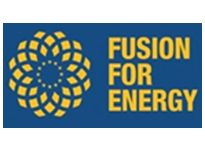ITER
courtesy ITER
General Description
ITER will be the world's largest experimental fusion facility and is designed to demonstrate the scientific and technological feasibility of fusion power for energy purposes. It is currently the world's most ambitious science project. Construction started in 2010 and the plant is expected to be completed for scientific operation in 2034.
The ITER project is located on a 180-hectare site at Cadarache, France and is managed by the ITER Organisation (IO), which employs around 700 staff. Europe contributes 45% of the construction costs, while the other six members of this joint international venture (China, India, Japan, the Republic of Korea, the Russian Federation and the USA) each contribute 9%.
Fusion is the process which powers the sun and the stars. When light atomic nuclei fuse together to form heavier ones, a large amount of energy is released. Fusion research is aimed at developing a prototype fusion power plant that is safe and reliable, environmentally responsible with abundant and widespread fuel resources.
The ITER Reactor (Tokamak) fusion plasma converts tritium and deuterium into helium, releasing heat and extremely energetic neutrons. The plasma (fuel) is required to be at 150 million °C. The final reactor specifications are for 500 MW heat output assuming a 50 MW external injected heating power.
The seven-storey Tokamak Complex will dominate the ITER site: 60 metres tall, 120 metres long and 80 metres wide. The structure will house not only the ITER Tokamak, but also more than 30 different plant systems that are necessary for the machine's operation. The ITER Tokamak is made of an 800m3 vacuum chamber surrounded by gigantic superconducting magnets for plasma confinement. The overall weight of the tokamak structure is 23’000 tonnes.
Founding year: 2006 Members (7): European Union + Switzerland, Japan, Russian Federation, USA, China, South-Korea, India
Budget ITER construction phase 1 (2006): ~16.6 Billion €
Swiss financial contribution: ~3% (in pro rata of the Swiss GNP to EU - to be paid to the EU in the frame of the Swiss partial association to the EU Research Framework Programmes).
Swiss involved research institutions: EPFL, PSI, Uni BS
Procurement policy
Each member state has established a Domestic Agency, which manages the procurement of that member's in-kind contributions to ITER. The Domestic Agencies employ their own staff and have their own budget, and place contracts with suppliers. They are responsible for organizing and carrying out the procurement within their respective countries.
ITER Organisation (IO), the central organisation at Cadarache, France oversees approximatively 10% of the total purchasing budget for specific strategic components.
F4E (Fusion for Energy) is the Domestic Agency responsible for the development and procurement of the EU and Swiss contributions to ITER. F4E is a European Joint Undertaking based in Barcelona that employs around 400 staff.
ITER Organisation Procurement
There are no nationality restrictions and companies from any ITER DA can bid on ITER Organisation contracts. The contracts are published on the ITER website and on the websites of Domestic Agencies.
A three phase tendering phase takes place for all tenders (Call for Tender) above 50 k€ (nomination by DAs, qualification, call for tender). The first two phases last on average 1.5 months. The duration of the tender phase (tender sent to contract awarded) is set between 3 and 6 months.
Open Tenders are published exclusively on the IO website. They do not require nomination from F4E (or equivalent DA).
Fusion for Energy (F4E) Procurement
F4E, the European Domestic Agency manages a total contract value of approximatively 4’000 M€.
All tenders are published on the F4E website. Companies can register their profile according to their sector of interest in order to be prompted for early market surveys.
Contracts are awarded according to EU public tender procedures and are one of the following forms: open procedure, restricted procedure, negotiated procedure or competitive dialogue.
Because of the technical complexity of ITER, SMEs and National Laboratories are recognized as important players and large companies (prime contractors) are encouraged to seek their support.
F4E follows European rules on public procurement and favours the bid offering “best value for money” rather than merely “the cheapest” making it easier for SMEs to bid for F4E contracts.
F4E Open Procedure
Any company can submit a tender. Tenders are evaluated on the basis of the criteria published in the contract notice and are evaluated on a price and quality points scale according to the contract notice. The contract goes to the tender with the highest scoring.
F4E Restricted Procedure
Stage one: Call for expression of interest. Companies are shortlisted based upon technical and financial capabilities following the market survey.
Stage two: Only pre-selected candidates are invited to submit their tender. Tenders are evaluated on the basis of the criteria published in the contract notice.
F4E Negotiated procedure
Can be used for the award of the contracts having a value <250 k€. It is a procurement procedure without a prior publication of a contract notice in which F4E shall invite economic operators of its choice to submit tenders and, subject to the condition that they satisfy the exclusion and selection criteria, negotiate the terms of the contract with one of more of them.
F4E Competitive Dialogue
F4E can launch such a procedure in collaboration with industry, when it is not possible to define the appropriate technical means or solutions to meet the F4E requirements.
F4E is increasingly encouraging the concept of "intra-European" consortia with the participation of SME’s.
Geo-return
ITER Organisation does not communicate information about geo-return values.
F4E has no obligation for a fair geographical return to EU countries. Nevertheless, the Procurement Department is sensitive to large disparities in the contract distribution.

